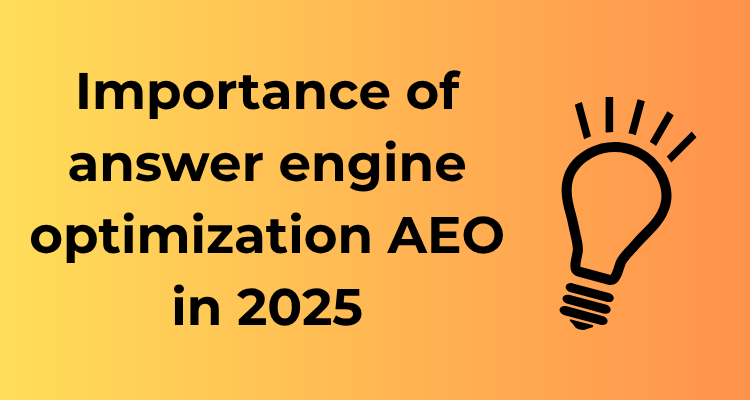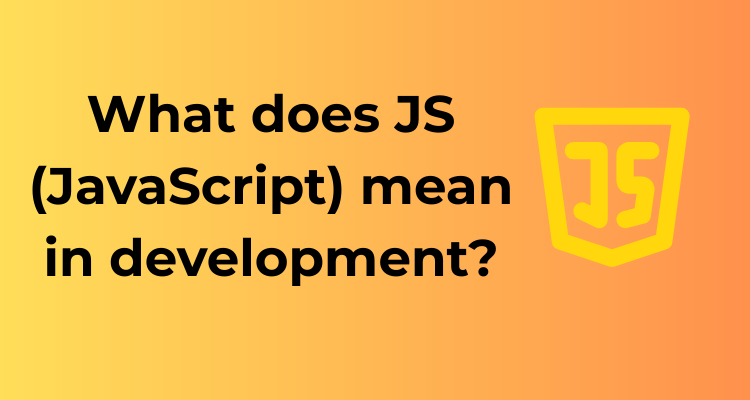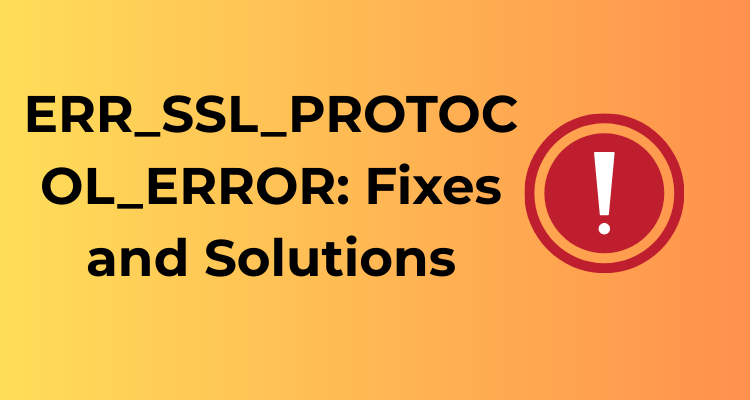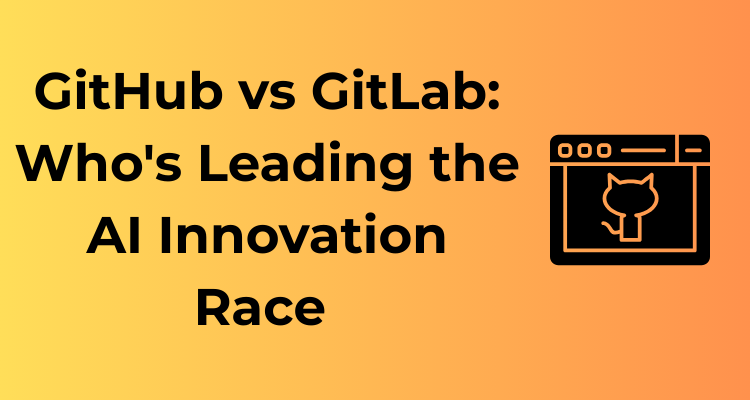Search engines have come a long way since their early days of indexing static web pages. Do you remember when we used to type disjointed keywords, hoping search engines could make sense of our query? Fast forward to 2025, and it’s clear that the way we search has drastically evolved into something way more conversational and intuitive. One big reason for this shift is the rise of Answer Engine Optimization (AEO). Let’s dig into how this transition from focusing on keywords to crafting answers has reshaped searches as we know them!
Why Are We Moving Towards Questions?

Here’s the thing: People don’t “think” in keywords. When searching online, they often pose questions, looking for quick and specific answers. Instead of searching “best running shoes,” they might type or even ask out loud, “What are the best running shoes for beginners?” Notice the difference? It’s richer, more contextual, and honestly, friendlier.
With conversational AI (like Alexa, Siri, and Google Assistant) growing leaps and bounds, the expectation is now for immediate, detailed, and accurate answers. We’re no longer just searching, we’re holding a conversation! So, businesses need to acknowledge this change by designing web content that delivers helpful, well-rounded answers rather than just scattering keywords everywhere and get visible on search engines.
What Does This Mean for Your Website?
Great question! If the goal is to surface at the top of search engines or appear as a featured snippet (you know, those boxes that show up with direct answers), here are a few things you’ll want to focus on:
- Understand Customer Questions: Conduct keyword research, yes, but go deeper by analyzing commonly asked questions using tools like Google’s “People Also Ask” or platforms like AnswerThePublic.
- Content Framed as Q&A: Write blogs, guides, or FAQs that explicitly address real questions your audience is typing or speaking into search engines.
- Prioritize Context and Clarity: Avoid overly technical jargon or convoluted sentences. Remember, you’re channeling a friendly expert persona!
The Role of Search Intent
Here’s another key piece to this puzzle: Search intent. Are users looking to learn something, buy something, or solve an issue? Understanding whether their goal is informational, transactional, or navigational will help you create targeted content that not only gets noticed by search engines but also resonates with your audience.
For instance, if someone searches, “Why is my phone battery draining fast?” they’re likely looking for information, not just a sales pitch for a new power bank. By addressing their concern empathetically—and offering expert advice—you become their go-to source for answers. That’s powerful.
Looking Ahead to 2025
So, what can we expect by 2025? The emphasis on question-based search, coupled with the growth of voice-first interactions, will only become stronger. Smart businesses will need to align their content strategies to cater to this shift by crafting nuanced, people-focused answers. What’s exciting is that it’s no longer about gaming the system with keyword density hacks—it’s about being genuinely helpful and human. Who wouldn’t want to browse a web brimming with thoughtful, clear, and actionable content?
The era of keywords alone running the show is behind us. If you’re ready to unleash the potential of AEO, embrace the art of answering questions. Nail down your audience’s curiosities, provide value, and yes, get ready to redefine the way your content connects in the ever-evolving search landscape.
The Rise of Conversational AI and its Role in AEO
Let’s talk about something that has been revolutionizing the way we interact with the digital world – Conversational AI. In 2025, it’s no longer just a nifty tech buzzword; it’s the driving force behind how people search for information and how businesses show up in search results. But what does that mean for Answer Engine Optimization (AEO)? Let’s dive in and explore its pivotal role in this AI-powered transformation.
What is Conversational AI, Really?

If you’re picturing a robot typing away behind your computer screen, think again. Conversational AI refers to technology like chatbots and virtual assistants (think Siri, Alexa, and Google Assistant) that simulate human conversations to deliver answers or solutions. What makes it unique is how it’s designed to understand natural language, whether that’s spoken or typed, and respond meaningfully. It feels… well, conversational! And that’s exactly why it’s taking the spotlight in AEO discussions.
Why Conversational AI Pairs Perfectly with AEO
In 2025, search engines aren’t just delivering a list of links or traditional results anymore. People want instant, accurate answers to their questions – and that’s what Answer Engine Optimization is all about. Conversational AI serves as the bridge between these questions and prompt, relevant answers. Here are a few reasons it matters:
- User Intent Decoded: Conversational AI is exceptionally skilled at interpreting the intent behind a user’s question. Whether someone asks, “What’s the best type of coffee for beginners?” or “Which coffee brands are eco-friendly?” the AI can identify the differences and deliver spot-on recommendations.
- Personalized Interactions: Unlike traditional search engines, AI assistants use context, user preferences, and even past interactions to tailor their responses – which is a goldmine for AEO strategies.
- Voice Search Takes Off: With voice assistants becoming household staples, voice-driven queries are now super conversational – full sentences, casual phrasing, and even slang. AEO focuses on optimizing for exactly these natural language patterns.
How to Leverage AI for AEO Success
Okay, so now that we know how conversational AI plays into AEO, let’s talk actionable strategies. How can you thrive in this AI-dominated world?
- Create Content with Conversational Queries in Mind: Think of how someone might phrase their question to an AI assistant. Develop FAQs and blog posts that directly address those questions.
- Focus on Natural Language: Use phrases and terms that sound like everyday speech rather than overly technical or robotic jargon.
- Structure Data for Machines: Implement schema markup so search engines (and AI assistants) can easily understand and deliver your content as answers.
The Future is Conversational
By 2025, conversational AI will feel as natural as chatting with a friend. For businesses, embracing this technology and aligning it with AEO best practices isn’t just important – it’s essential. Remember, the key to thriving in an AI-powered world is to focus on the user experience. What questions are they asking? How can you deliver the best, most helpful answers?
Key Differences Between AEO and Traditional SEO
Let’s talk about two acronyms that sound similar but function quite differently: AEO (Answer Engine Optimization) and SEO (Search Engine Optimization). If you’re scratching your head trying to figure out how AEO stands apart from the SEO we’ve all been working hard to perfect over the years, don’t worry—you’re not alone! Grab a coffee, and let’s dive into it.
1. The Focus: Questions vs. Keywords
Traditional SEO has always been about understanding user intent through keywords. You’d research high-ranking keywords and inject them strategically into your content like magic ingredients. But AEO takes it a step further. Instead of focusing solely on keywords, it prioritizes questions. Why? Because people increasingly search the way they talk, asking specific questions like, “How do I bake a chocolate cake without eggs?” AEO ensures your content provides a clear, concise, and valuable answer to those queries.
2. The End Goal: Visibility vs. Instant Relevance
For SEO, the aim is usually to help your website rank high on Google’s SERPs (Search Engine Results Pages). The goal is visibility—lots of clicks, traffic, and eyeballs. Great, right? Of course! However, AEO doesn’t just chase visibility. Its goal is instant relevance. It’s about getting your content to precisely answer a particular query, often in formats like voice assistant responses, featured snippets, or direct answers. It’s less about someone clicking a link and more about owning that top spot where the answer is given immediately. Think of it as being the VIP guest who always has the mic in Q&A sessions!
3. Voice-First vs. Desktop Optimization
We can’t overlook how rapidly voice search is growing. Thanks to Alexa, Siri, and Google Assistant, people now talk to their devices as if they were dear friends. SEO traditionally focuses on desktop optimization with long-tail keywords and advanced linking strategies. AEO, however, is built around voice-first technology. It favors natural language patterns, conversational tones, and question-and-answer formatting because people speak to devices differently than they type. With AEO, you’re aiming to be audio-friendly, anticipating what people will say out loud to find information.
4. Long Form vs. Concise Content
Let’s not forget content length. Traditional SEO often rewards detailed, long-form pieces covering topics in exhaustive depth. AEO, meanwhile, shines the spotlight on concise, to-the-point answers that are easy for both search engines and virtual assistants to present to users. Brevity is key. Think bite-sized nuggets of wisdom rather than five-course meals of overanalysis.
5. Human Behavior at the Core
Finally, the biggest difference lies in their philosophies. Traditional SEO is grounded in algorithms and technical elements like meta tags, backlinks, and page speed. While AEO doesn’t ignore these, it places a heavier emphasis on understanding *human behavior*. It seeks to ensure users get the most helpful answers with minimal effort. It’s as if AEO says, “Hey, I get how you’re feeling, and here’s the exact help you need, efficiently!”
Preparing Your Business for Voice-First and AI-Powered Searches
Let’s be real: the way people search for information has completely shifted, hasn’t it? Where we once typed short, clunky phrases in search bars (“best pizza near me”), we now casually ask our voice assistants questions like, “Hey Siri, where can I get the best pizza nearby?” These voice-first, AI-driven searches are only growing stronger, and if businesses want to stay ahead in 2025, adapting to this shift is absolutely essential.
Why Voice-First is the New Normal
Think about the convenience: no typing, no screens, just asking a quick question and getting an instant answer. With devices like Amazon Echo, Google Nest, and AI assistants integrated into smartphones, voice searches are everywhere. It’s projected that a significant portion of all searches will be voice-based in the next year or two. If your business isn’t catering to this new reality, you might as well be invisible.
Steps to Align Your Business with Voice and AI Search
Ready to set up your strategy? Here are smart, actionable steps to stay relevant:
- Focus on Conversational Keywords: Forget old-school short-tail keywords. Voice search is all about natural, conversational phrasing. For example, instead of targeting “best shoes 2025,” try optimizing for “What are the best running shoes for 2025?” It’s all about understanding how people really talk to their devices!
- Emphasize Long-Tail Search Queries: Voice search tends to be longer and more specific. For instance, rather than “bakeries,” someone might ask, “Where’s the best gluten-free bakery near me?” Adjust your content to respond to these nuanced queries.
- Leverage Structured Data: Incorporate schema markup to help search engines understand your content better. Structured data makes it more likely your business will appear in voice-first search results.
- Make Local SEO a Priority: A large chunk of voice searches revolves around local information. Claim your business on Google My Business, ensure your contact details are correct, and create localized content to boost your visibility in “near me” searches.
AI-Powered Searches Are Smarter Than You Think
Voice-first searches are just one piece of the puzzle. AI tools like Google Bard and ChatGPT are learning to provide precise, tailored answers to user queries. The days of users clicking through multiple results are dwindling—AI-powered search prioritizes direct answers. This means your content must be laser-focused on user intent.
To prepare for this, here’s what to do:
- Understand User Intent: Why are people searching for your services, and what outcomes are they hoping for? Addressing this in your content makes it easier for AI to highlight your site.
- Create Concise, Winning Content: AI loves succinct, actionable answers. Use clear headings, bullet points, and scannable sections to present your message effectively.
- Optimize for Mobile Users: Most voice searches happen on mobile devices. Ensure your website is mobile-friendly, with fast loading speeds and intuitive navigation.
Small Changes, Huge Results
Preparing your business for voice-first and AI-powered searches may seem daunting, but you don’t have to overhaul your entire strategy overnight. Start small—update your content to mirror how people naturally speak, tackle frequently asked questions, and embrace tools like schema markup. These adjustments will pay off in building trust, visibility, and accessibility in this tech-forward age.
Why Featured Snippets and Direct Answers Matter More Than Ever
Oh, the mighty and elusive featured snippet—the crown jewel of search engine results! If you’re wondering why they matter more than ever in 2025, you’re in the right place. Let’s explore their growing importance, especially in the age of Answer Engine Optimization (AEO).
What’s the Deal With Featured Snippets?
A featured snippet is like a search engine saying, “Here, I did all the work for you!” It’s that concise box at the top of Google results—above all the other links—summarizing the best possible answer to a user’s query. In AEO, where the focus is on directly answering questions, the snippet is the go-to format for both human searchers and AI-driven virtual assistants.
Here’s why this matters: in 2025, a whopping percentage of searches come from voice-based interactions. When users ask Siri, Alexa, or Google Assistant their burning questions, the answers almost always pull from top snippets. Miss out on that spot, and you lose a big chunk of visibility in the digital age.
Why Are Direct Answers So Significant?
The concept of “direct answers” is simple but profound. It’s not about giving users endless info to sift through; it’s about giving them instant gratification—a specific, to-the-point response. For instance:
- User query: “What’s the ideal room temperature for sleeping?”
- Direct answer: “The ideal sleeping temperature is between 60°-67°F.”
See? Straight to the point. AI loves this format, and so do searchers. In an era where AEO relies on helping users efficiently solve their problems, providing clear, actionable answers is non-negotiable.
Why They Matter More in 2025
Now, let’s zoom out and talk trends. Why are these elements becoming even more critical? Check this out:
- Increased Voice Search: With conversational AI ruling the tech space, people are searching more conversationally. If your content doesn’t offer a succinct, human-centric answer, you’re missing out.
- Shifting Attention Spans: People don’t want to visit 10 pages—they want a single, helpful answer now. Featured snippets and direct answers are the ultimate solution to shrinking attention spans.
- AI-Powered Assistants: Smart devices and AI assistants thrive on structured, easy-to-digest answers. Optimizing for snippets makes your content more relevant in their “eyes.”
How to Show Google You’ve Got the Goods
If your goal is to grab the top spot as a featured snippet, there are some tried-and-true strategies. Here’s what to focus on:
- Use question-based headers: Think FAQs or H2 tags that directly ask a user’s questions. Let Google know what you’re answering upfront!
- Provide clear answers: Be concise, but don’t skimp on value. Use short paragraphs, lists, or tables to organize your response.
- Target long-tail keywords: Users are searching more specifically these days. Think beyond generic terms like “best laptops” and aim for “best laptops under $1,000 for gaming.”
- Structure matters: Snippets often favor content that’s well-organized, so embrace headers, subheaders, and bullet points liberally.
The Bottom Line
Featured snippets and direct answers aren’t just buzzwords—they’re must-have strategies for AEO in 2025. If your content doesn’t address specific questions or stand out as snippet-worthy, you’re leaving valuable traffic (and conversions) on the table. Tailoring your content to this model means future-proofing your business for the voice-first, AI-driven world we’re now living in.
Effective Strategies to Optimize for Intent-Based Queries
Ah, intent-based queries — the backbone of how search engines and answer engines thrive these days! Let’s chat about how you can make your content more aligned with the *why* behind a user’s search, not just the *what*. Ready? Let’s dive in!
What Are Intent-Based Queries, Anyway?
People don’t just type random words into search bars anymore — or at least, not as much as they used to. Instead, people use search engines and virtual assistants to *get things done* or *solve problems*. For example, instead of typing “best pizza” into Google, a modern searcher is much more likely to ask, “Which pizza near me offers gluten-free options?”
Intent-based queries are all about what the user *intends to accomplish*. Are they looking to learn something? Do they want to buy a product? Are they hoping to compare services? If you can figure out their motivation, you’re already ahead in the game.
Why Intent Is Your Secret Weapon
Here’s the deal: AEO (Answer Engine Optimization) is honing in on providing precise, immediate, and accurate answers. This means understanding user intent is more crucial than ever before. It’s no longer just about ranking high but about aligning with what people genuinely want.
When your content matches intent, you win trust – and in 2025, trust is the golden currency of the digital landscape. Not only does this increase your conversion rates, but it also boosts your chances of making it into highly-coveted featured snippets and direct answer boxes.
Top Strategies to Nail Intent-Based Optimization
Alright, now that we’ve convinced you of the importance of hitting that intent sweet spot, here are some tips to put it into action:
- Start with keyword intent research: Use tools like Google’s Keyword Planner, SEMrush, or Ahrefs to understand the nature of searches. Break them into categories of intent — informational, navigational, transactional, and commercial.
- Focus on conversational phrases: Remember, more people are typing or speaking full queries like they’re talking to a friend. Incorporate specific long-tail keywords and natural language questions.
- Create multiple content types: Match content to intent. For example:
- Informational intent? Write how-to guides, explainer videos, or FAQs.
- Transactional intent? Showcase product demos, pricing pages, or coupon deals.
- Comparison intent? Develop blog posts that highlight “best of” lists or product comparisons.
- Be crystal clear: Clarity beats creativity (most of the time). Your headlines, subheadings, and meta descriptions should *directly address* the intent.
- Leverage schema markup: Use structured data to help search engines identify and deliver the right answer directly in search results.
- Optimize for voice search: With voice queries continuing to rise, think conversationally. “How can I find eco-friendly light bulbs near me?” is voice-search gold!
Measure, Adapt, and Improve
It doesn’t stop at creating intent-optimized content — oh no! Keep tracking performance. Use analytics tools to see how well your pages align with search queries. Don’t forget to test and refine your strategies as search algorithms evolve.
Lastly, remember, intent is never static. As consumer behavior evolves, so will expectations. Keep learning about your audience and building content that solves their real-world problems.
How AEO Will Shape the Future of Content Creation
Picture this: it’s 2025, and the way people interact with search engines has completely evolved. Instead of typing keyword-based searches, they’re casually asking their devices conversational and highly specific questions. This shift has already begun, but in the coming years, it’ll only accelerate. For content creators, this means a big, exciting leap into the future of Answer Engine Optimization (AEO). So, how exactly is AEO about to redefine the way we create content? Let’s dive right in!
Focusing on Answering, Not Just Ranking
Gone are the days when content creation was solely about stuffing pages with keywords to climb up search engine rankings. AEO encourages a greater focus on crafting content that directly answers users’ questions. Imagine someone asking their AI assistant, “What’s the best way to learn graphic design at home?” Your content needs to feel like a trusted friend, providing clear, concise, and helpful answers.
In this sense, AEO is about intent-driven content. Instead of thinking, “How do I get people to land on this page?”, the question becomes, “How do I provide the most accurate and valuable answer to their concern?”
Interactive and Engaging Media Takes Center Stage
As AEO evolves, so too will the forms of content we create. A well-crafted blog post will always have its place, but now, it’s time to think about complementing that with multimedia.
- Videos: Quick and precise explainer videos can answer queries in a snappy and engaging way, especially for visual learners.
- Infographics: For people wanting fast, digestible information, these visuals can present bite-sized answers with zero confusion.
- Podcasts and Audio Snippets: With the rise of AI-powered voice search tools, providing audio-based answers will become a practical and engaging strategy.
The goal here is to ensure your content adapts to the various ways people consume information in the digital age. It’s no longer a “nice-to-have”—it’s the key to staying relevant.
Navigating the World of Dynamic and Real-Time Queries
In the near future, search queries won’t just be static. Users will want answers based on real-time updates. For example, a query like “Where’s the nearest pet-friendly café right now?” requires dynamic content that adjusts to location, time, and other moment-specific factors.
To gear your content for this, it’s important to integrate tools like AI-powered chatbots or live data feeds. Your content must not just be relevant, but also timely and personalized to meet these demands.
Human-Touch Creativity Meets AI Insights
AEO in 2025 won’t discard the need for creativity—if anything, it will emphasize it more! But it will be creativity powered by data-backed insights. Using AI tools to analyze the most common user intents, queries, and trends, you can strategically shape your content to meet demand while still injecting your unique voice.








